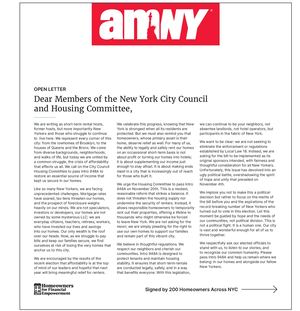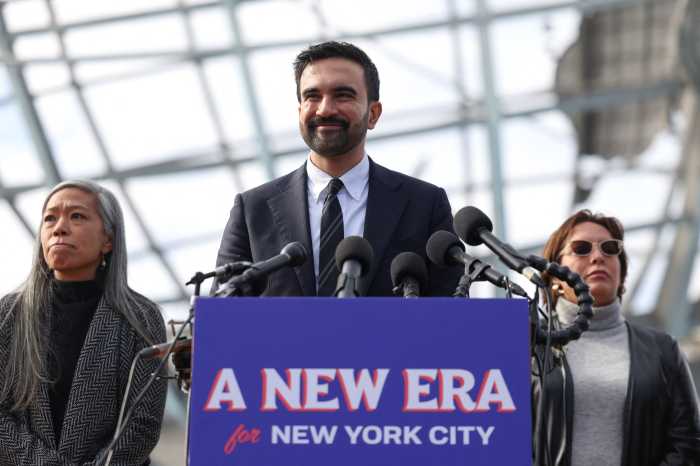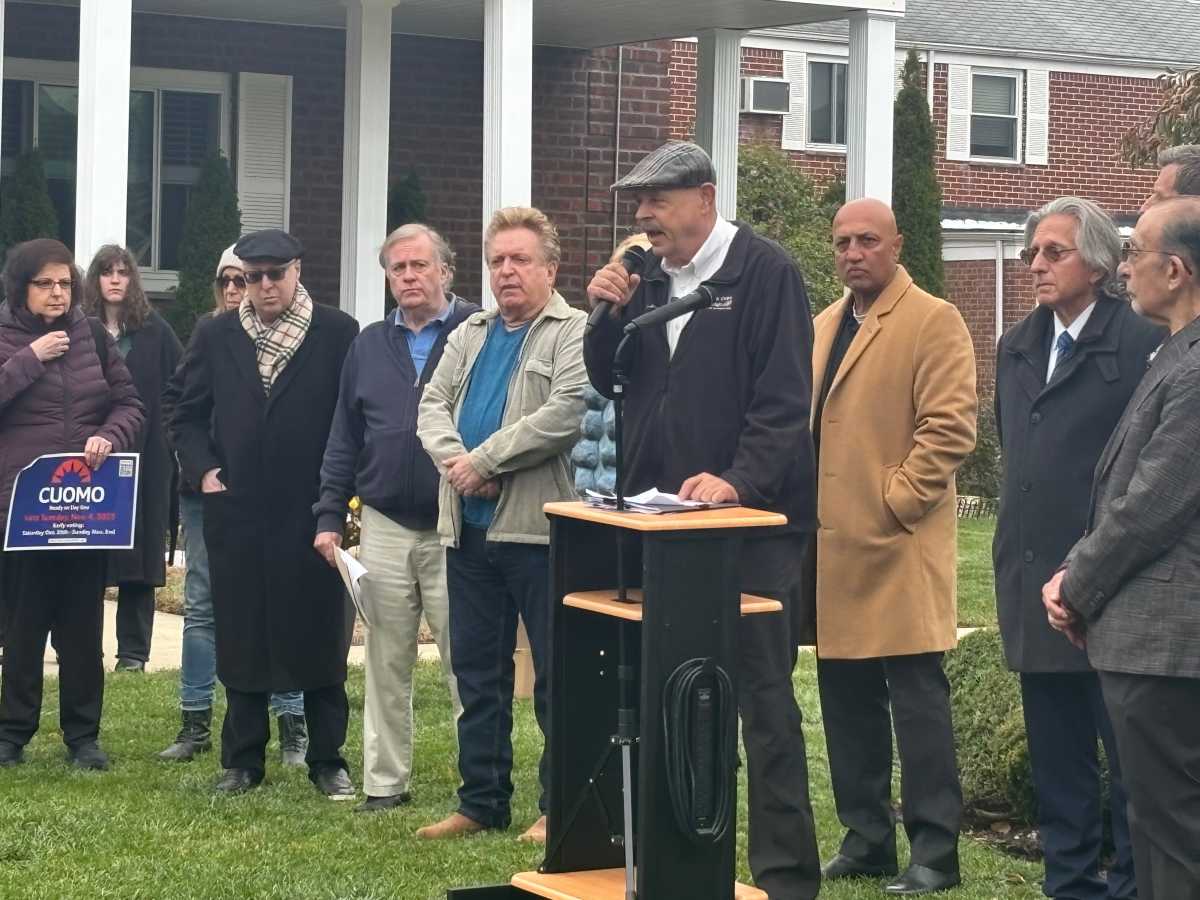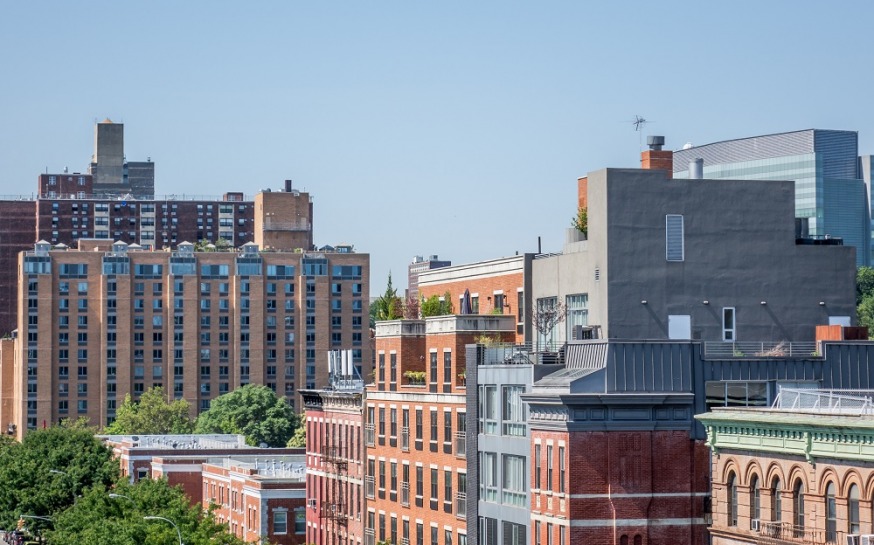They are the spots where New Yorkers spend lunch hours, read on their days off, and catch some sun and fresh air. But residents in downtown Manhattan are concerned that their favorite public plazas could soon be gone.
The City Council approved a controversial zoning amendment last week to let building owners and developers along a nine-block strip on Water Street fill their privately-owned public spaces, or POPS, with stores, outdoor cafes and other options to attract more visitors.
Some community leaders and the Department of City Planning say the move aims to encourage developers to take better care of their POPS, but opponents argue it gives them room to change them completely and could set a bad precedent for other plazas in the city.
“We don’t need any more Duane Reades and banks,” said Gina Pollara, the president of the Municipal Arts Society, which advocates for better access to POPS.
The amendment will affect 17 buildings between Whitehall and Fulton streets and about 110,000 square feet of plazas and arcades, which are passageways supported by archways or columns. Property owners will be able to put kiosks and open air cafes in the plazas and retail spaces in the arcades.
Retail stores can occupy up to 7,500 square feet but need special approval for anything larger. The maximum width for banks in the spaces is 30 feet and for drugstores it’s 50 feet.
Jessica Lappin, president of the Alliance for Downtown Manhattan, which was a key player in the deal, said the changes were put in place because the plazas are poorly kept and are not attracting enough visitors year-round. She said property owners are more likely to beautify the areas if they are more populated by people.
“Water Street is tough,” she said. “Some of these arcades and plazas can be dark. If you have a shop there that’s well lit, it will bring people out.”
The Water Street plazas, like most of the 525 POPS in Manhattan, Brooklyn and Queens, were created in the ‘60s, ‘70s and ‘80s as compensation to residents from the city in exchange for developers getting to build taller buildings, according to Pollara.
Alice Blank, a Financial District resident who has been organizing neighbors against the amendment, said the new zoning feels like an about-face to residents who were promised the spaces.
“In development deals such as this, we need to focus on the hard math — square feet and its economic value — and not on illusory and alleged public benefits, like an ‘enhanced pedestrian experience,’” she said.
Locals who chatted with amNewYork had mixed reactions to the changes.
Jill Levy, 48, of TriBeCa, said she wouldn’t mind more retail in the area. She recalled how she once waited in a plaza for some friends and wished she could grab a salad or coffee.
“It’s not like we’re losing any charm. So yeah, why not?” she said of the amendment.
Megan Greener, an actor from Ditmas Park who was relaxing in a plaza last week, questioned whether landlords and developers have the public’s best interests in mind.
“They’re probably going in the direction that most landlords do: Getting more money without input from tenants or the public,” she said.
Lappin and the city have reiterated that the Water Street amendment is tailored for that set of blocks, but advocates said the plan could inspire developers and building owners in other parts of the city.
Layla Law-Gisiko, of Manhattan Community Board 5, which represents midtown, said the board often grants requests from cafe and restaurant owners to put tables in POPS but she said the additions have done nothing to attract crowds.
Instead, “people are more reluctant to use the space because they don’t want to buy anything,” she said.
Law-Gisiko added that developers find ways to skirt the laws, pointing to the city’s investigation of Donald Trump’s use of the Trump Tower POPS on Fifth Avenue for campaign events.
The Trump Organization has denied using the space inappropriately.
Patrice Derrington, director of the real estate development program at Columbia University’s Graduate School of Architecture, Planning and Preservation, pointed to past examples such as the Fifth Avenue Apple Store, where the addition of retail to a plaza or arcade actually benefited the community.
“Someone is paying rent, Apple is making a lot of dollars, and it’s attracting a lot of people. It’s an indication on how our cities develop,” Derrington said.
Members of the public can have their voices heard this Wednesday when the City Council’s Land Use Committee holds a hearing on a bill to require the city to collect reports on the state of the open spaces.
The reports would determine which POPS owners are operating in accordance with their agreements with City Hall.
“I think earlier engagement with the community is important,” Derrington said.






































